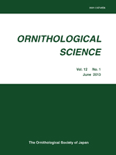
ORNITHOLOGICAL SCIENCE
Scope & Guideline
Fostering impactful discourse in ornithological research.
Introduction
Aims and Scopes
- Breeding Ecology and Behavior:
Research focusing on the reproductive behavior, nesting preferences, and breeding success of various bird species, highlighting how ecological factors influence these processes. - Genetic Studies and Population Dynamics:
Investigations into the genetic structure, parent-offspring relationships, and population dynamics of avian species, providing insights into their evolutionary biology and conservation needs. - Interactions with Environment and Habitat Use:
Studies examining how birds interact with their environments, including habitat preferences, foraging behavior, and the impact of human activities on their populations. - Conservation and Management Strategies:
Research dedicated to the conservation of bird species and their habitats, addressing issues such as reintroduction programs, habitat restoration, and the effects of climate change. - Migration and Dispersal Patterns:
Explorations of migratory behaviors, routes, and ecological determinants influencing the dispersal patterns of birds across different geographical regions.
Trending and Emerging
- Impact of Urbanization on Bird Populations:
An increasing number of studies are examining how urban environments affect bird behavior, breeding success, and species distribution, emphasizing the need for urban conservation strategies. - Genomic and Genetic Analyses in Conservation:
Research utilizing genomic tools and genetic analyses to understand population structure, genetic diversity, and conservation genetics is on the rise, providing deeper insights into avian biodiversity. - Climate Change and Its Effects on Avian Ecology:
There is a growing emphasis on understanding how climate change impacts migration patterns, breeding times, and habitat use, reflecting the urgent need to address these challenges in conservation efforts. - Behavioral Ecology and Social Interactions:
Emerging studies are increasingly focusing on the social behaviors and interactions among bird species, including cooperative breeding and social dynamics, which are critical for understanding species adaptation. - Use of Technology in Avian Research:
The integration of technology, such as camera traps and tracking devices, is becoming more prevalent in avian research, allowing for innovative studies on behavior, migration, and habitat use.
Declining or Waning
- Traditional Taxonomy and Classification:
Research focusing solely on traditional taxonomic classifications appears to be declining, as there is a shift towards integrative approaches that combine genetic, ecological, and behavioral data. - Generalized Avian Physiology Studies:
While physiological studies remain important, there seems to be a decrease in publications that do not connect physiological data to ecological or behavioral outcomes, reflecting a trend towards more applied research. - Papers on Common Species Without Ecological Context:
Studies on common or well-known species without a significant ecological context are becoming less frequent, as researchers increasingly emphasize the conservation status and ecological roles of less-studied species.
Similar Journals

MARINE ORNITHOLOGY
Navigating the Intersection of Animal Science and OceanographyMarine Ornithology, published by the Pacific Seabird Group, is a vital resource in the field of animal science, zoology, and oceanography. With an ISSN of 1018-3337 and E-ISSN of 2074-1235, this journal has been a cornerstone for researchers and enthusiasts since its inception, actively contributing to the understanding of marine bird species and their ecosystems. Although it is currently not an open-access journal, it provides critical insights and findings that inform both academic research and practical conservation efforts. With its category quartiles positioned in Q3 for both Animal Science and Zoology, and Oceanography, Marine Ornithology occupies a significant, albeit competitive niche among scholarly publications. Researchers can benefit from its comprehensive coverage of marine avian studies, which is crucial for addressing the challenges these species face in changing oceanic environments. As the journal continues to evolve, with coverage from 1990 to 2024, it maintains an essential role in enriching our knowledge of marine biodiversity.

Ornithology Research
Exploring the Skies of Avian ScienceOrnithology Research is a leading academic journal published by SPRINGERNATURE, specializing in the field of avian studies and contributing to the broader category of Animal Science and Zoology. With a respectable Q2 ranking in its field as of 2023, this journal provides a dynamic platform for the dissemination of innovative research findings related to ornithology, ecology, and conservation. The journal, which transitioned to an Open Access model, ensures that its research is accessible to a global audience, fostering collaboration and knowledge sharing across disciplines. With an E-ISSN of 2662-673X, Ornithology Research serves the needs of researchers, professionals, and students dedicated to understanding the complexities of avian life. Its commitment to high-impact, peer-reviewed articles makes it an essential resource for anyone interested in advancing the science of ornithology.
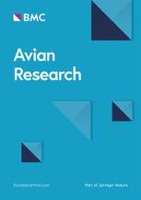
Avian Research
Championing biodiversity through cutting-edge ornithological research.Avian Research is a premier, open-access journal dedicated to advancing the field of ornithology and avian studies. Published by KEAI PUBLISHING LTD since 2014, this journal aims to disseminate high-quality research covering a broad spectrum of topics related to bird biology, ecology, behavior, and conservation. With its impactful presence, rated as Q1 in Animal Science and Zoology and Q2 in Ecology, Evolution, Behavior and Systematics for 2023, Avian Research stands out as a pivotal resource for researchers, professionals, and students alike. The journal's dedication to open access ensures that valuable findings are readily available to a global audience, fostering collaboration and innovation within the scientific community. Located in Beijing, China, Avian Research invites contributions that advance our understanding of avian species and their environments, playing a critical role in promoting biodiversity and sustainable practices in avian conservation.

ORNITOLOGIA NEOTROPICAL
Championing the conservation of Neotropical birds through research.ORNITOLOGIA NEOTROPICAL is a vital journal dedicated to advancing the field of Neotropical ornithology, published by the esteemed Neotropical Ornithological Society in collaboration with the USGS Patuxent Wildlife Research Center. With an ISSN of 1075-4377, this journal serves as a platform for researchers, professionals, and students to disseminate important findings related to avian biodiversity, ecology, and conservation in the Neotropical region. Although currently classified in Q4 quartiles for both Animal Science and Zoology and Ecology, Evolution, Behavior and Systematics, ORNITOLOGIA NEOTROPICAL has been gaining recognition since its inception in 2005. The journal promotes open discussions and rigorous methodologies that significantly contribute to the understanding and protection of avian species. By facilitating accessibility to cutting-edge research and fostering a collaborative scientific community, ORNITOLOGIA NEOTROPICAL aims to enhance the impact and importance of ornithological studies in the Neotropical domain.
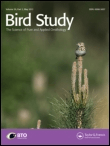
BIRD STUDY
Illuminating the path to avian conservation and understanding.BIRD STUDY, an esteemed journal published by Taylor & Francis Ltd, stands at the forefront of avian research, contributing significantly to the fields of ecology, evolution, behavior, and conservation. With its ISSN 0006-3657 and E-ISSN 1944-6705, this journal has been a cornerstone of ornithological studies since its inception in 1954 and continues to provide a critical platform for the dissemination of knowledge through 2024 and beyond. It holds a respectable Q3 quartile ranking in both Ecology, Evolution, Behavior and Systematics and Nature and Landscape Conservation, reflecting its pivotal role in the academic community. While the journal is not open access, it continues to attract submissions from a diverse array of researchers and professionals eager to share their findings on the intricate and dynamic interactions of birds within their ecosystems. As the global focus on biodiversity and conservation intensifies, BIRD STUDY remains dedicated to fostering knowledge and encouraging evidence-based practices that aim to protect avian species and their habitats.
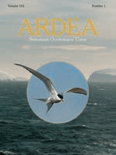
ARDEA
Fostering collaboration in animal science and ecology.ARDEA, published by the Nederlandse Ornithologische Unie, is a prominent journal in the fields of Animal Science, Zoology, and Ecology. With its rich history spanning from 1981 to the present, ARDEA serves as a vital platform for researchers and professionals dedicated to avian studies and the ecological sciences. This quarterly journal is recognized in the Q3 category for both Animal Science and Ecology, as per the latest rankings, and maintains an impressive global standing within its subject areas. Although it operates without an open access model, the journal provides significant insights and contributions to the understanding of bird biology, conservation, and evolution. Researchers and students seeking to advance their knowledge in ornithology and related fields will find ARDEA to be an indispensable resource, promoting high-quality research and fostering academic collaboration.
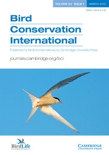
BIRD CONSERVATION INTERNATIONAL
Empowering conservation efforts with cutting-edge research.BIRD CONSERVATION INTERNATIONAL, published by Cambridge University Press, stands as a premier academic journal dedicated to the field of avian conservation and the vital ecological interactions that sustain bird populations worldwide. With an impressive impact factor reflected through its Q1 ranking in Animal Science and Zoology, alongside notable Q2 standings in Ecology and Nature and Landscape Conservation, this journal provides a crucial platform for researchers and practitioners committed to advancing the science and practice of bird conservation. Spanning articles from its inception in 1991 through to its future publications in 2024, BIRD CONSERVATION INTERNATIONAL not only fosters innovative research but also nurtures a global community dedicated to the preservation of avian species and their habitats. While currently not offering open access, it remains a cornerstone for scholarly communication in its field, making significant contributions to knowledge and policy shaping conservation efforts across the globe.
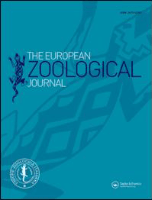
European Zoological Journal
Exploring the Wonders of ZoologyEuropean Zoological Journal, published by Taylor & Francis Ltd, is an esteemed open-access publication dedicated to advancing the exciting field of zoology. Since its inception in 2017, this journal has progressively established itself as a vital resource for researchers, professionals, and students alike. With its Q2 ranking in Animal Science and Zoology as of 2023, the journal ranks in the 69th percentile among its peers, showcasing its influence and contribution to the discipline. The journal’s broad scope covers a wide range of topics within zoology, aiming to foster an understanding of animal biology and conservation efforts. As an open-access journal, it not only enhances the dissemination of knowledge but also encourages collaborative research across global communities. Situated in the United Kingdom, the European Zoological Journal invites submissions that contribute to the evolving discourse in animal sciences, and endeavors to support the scientific community in addressing pressing ecological challenges.

Birds, published by MDPI, serves as a pivotal platform for scholarly exchange in the fields of Animal Science, Zoology, and Ecology. With its publication journey from 2020 to 2024, the journal notably holds a Q2 ranking in both the Animal Science and Zoology, and Ecology, Evolution, Behavior and Systematics categories for 2023, indicating its growing influence and relevance in these critical areas of study. Hailing from Switzerland, Birds is committed to advancing understanding of avian biology and ecology, offering timely research findings and fostering interdisciplinary collaboration. The journal features an Open Access model, allowing unimpeded access to high-quality research and facilitating greater dissemination of knowledge. Aspiring researchers, seasoned professionals, and students alike will find a wealth of insights and innovative approaches within its pages, contributing significantly to the conservation and appreciation of bird species worldwide.

RUSSIAN JOURNAL OF THERIOLOGY
Fostering Insights into Evolution and BehaviorRUSSIAN JOURNAL OF THERIOLOGY is a prominent academic journal published by KMK SCIENTIFIC PRESS LTD in collaboration with the esteemed Moscow State University. As a dedicated platform for researchers in the fields of Animal Science and Zoology, Ecology, Evolution, Behavior and Systematics, and Plant Science, this journal strives to advance our understanding of terrestrial ecosystems and their inhabitants. Although it currently holds a Q4 ranking and ranks within the lower percentiles of its respective categories, the journal's consistent publishing output since 2011 showcases a commitment to facilitating scientific discourse and collaboration. Addressed to a diverse audience of researchers, professionals, and students, RUSSIAN JOURNAL OF THERIOLOGY serves as an essential resource for disseminating valuable insights and fostering future advancements in the biological sciences.